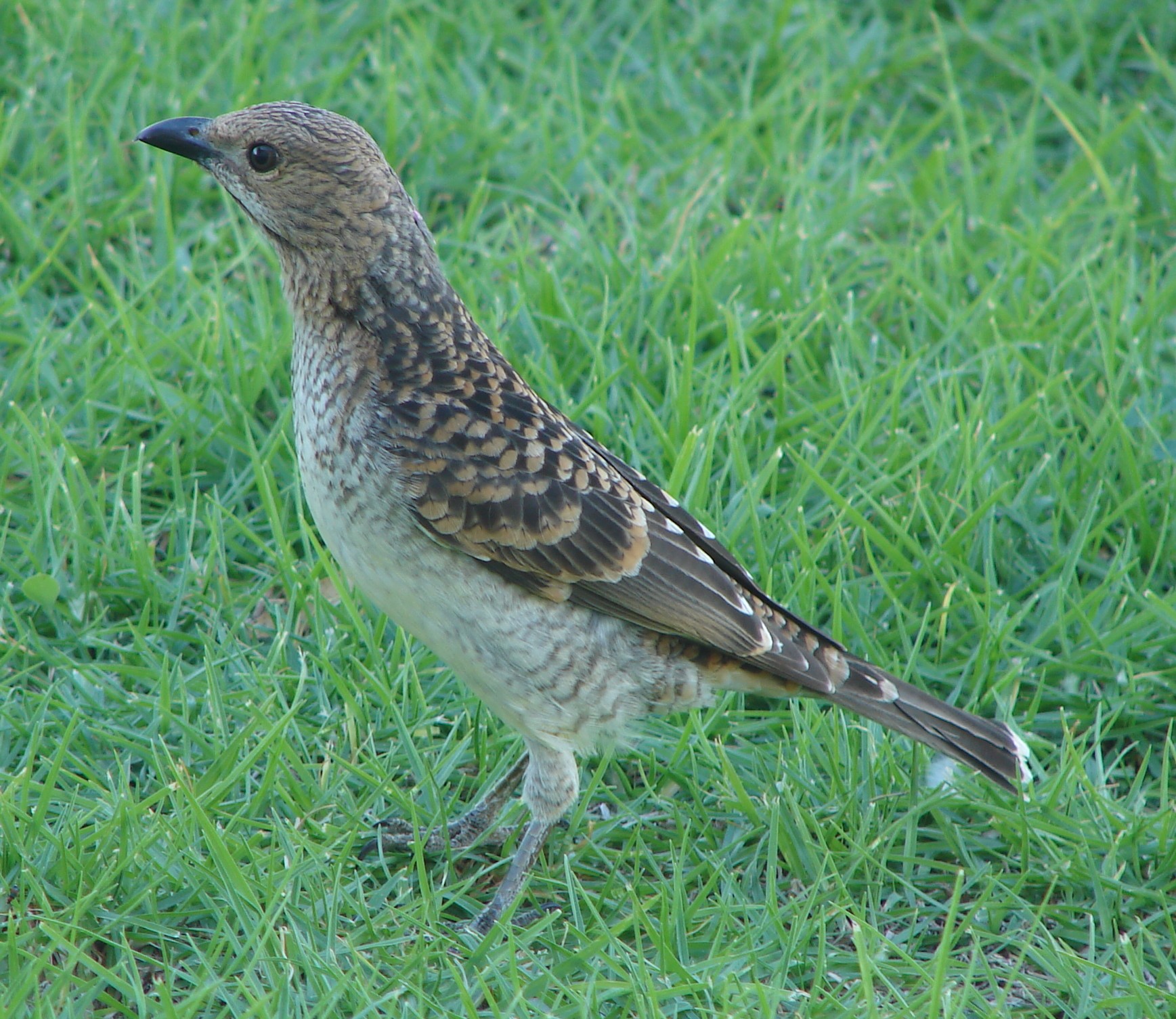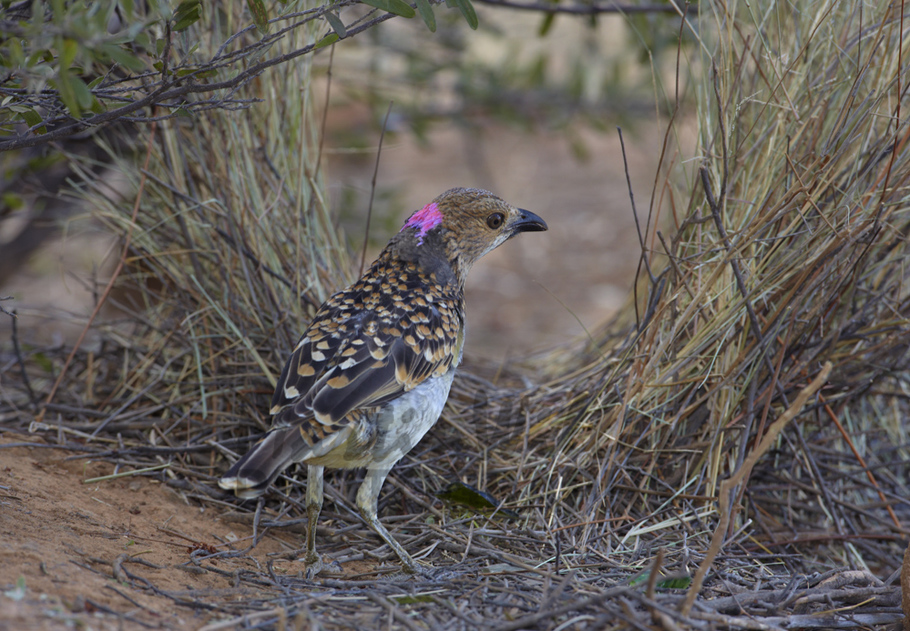
Chlamydera maculata
TAXONOMY
Chlamydera maculata Gould, 1837, New Holland = Liverpool
Plains, Australia, New South Wales, Australia.
OTHER COMMON NAMES
English: Large-frilled bowerbird, cabbage bird; French: Jardinier
maculй; German: Fleckenlaubenvogel; Spanish: Capulinero
Moteado.
PHYSICAL CHARACTERISTICS
11.4 in (29 cm); female 0.27–0.36 lb (124–162 g), male
0.28–0.33 lb (125–150 g). Mottled brown with lilac bar across
the back of the neck.
DISTRIBUTION
Interior of Queensland south of 20 degrees South, except the
extreme west and southwest, and interior of west and central
New South Wales, except the extreme western border country.
Extends a small way into the northwest corner of Victoria
and just into South Australia along the Murray River system.
Occurs from sea level to about 1,640 ft (500 m).
HABITAT
Brigalow and open eucalyptus woodlands, with a preference for
riverine woodland.
BEHAVIOR
Grassy avenue bowers are built beneath low bushes or shrubs,
3,300–6,600 ft (1,000–2,000 m) apart. Decorations (to 1,000 or
more) include berries, seed pods, pebbles, bones, snail shells,
and glass. Adult males emit infrequent, loud, far-carrying advertisement
vocalizations of harsh churrings and other notes
including vocal mimicry.
FEEDING ECOLOGY AND DIET
Omnivorous. Eats fruits, flowers, leaves, seeds, and arthropods.
Grasshoppers are important to the nestling diet.
REPRODUCTIVE BIOLOGY
Polygynous, with promiscuous males and exclusively female
nest attendance. Breeding occurs during July through March.
Egg laying peaks in October through February. Typically
places sparse open cup nest in trees and bushes at 10–40 ft
(3–12 m) above ground. Nests are made of a loose bulky foundation
of dead twigs and sticks and an egg-cup of fine twiglets,
sometimes with dried grass stalks. Incubation period is unknown.
Nestling period at one nest was 21 days.
CONSERVATION STATUS
Not threatened, but numbers have historically declined in
some areas because of illegal shooting and poisoning, predation
by domestic and feral cats and foxes, and widespread
clearing and/or modification/fragmentation of habitat. Populations
are officially considered Endangered within state of Victoria.
SIGNIFICANCE TO HUMANS
Commonly kept in aviculture, where birds thrive. Bird known
to steal items from homes, camps, and vehicles for bower decorations.
Birds are killed as pests to gardens and orchards.
Photo Gallery of - Spotted bowerbird




 Animalia Life
Animalia Life